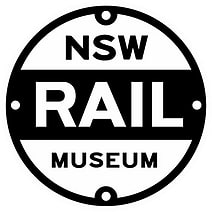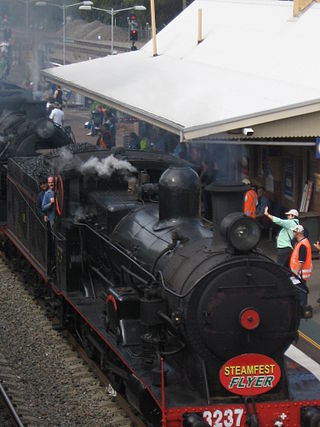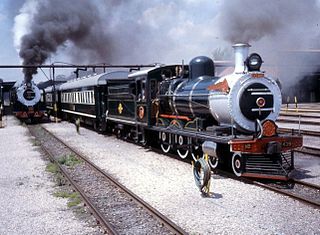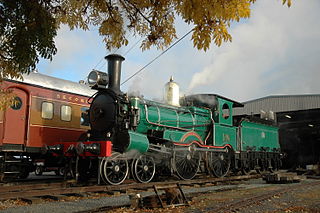Related Research Articles

The National Railway Museum is a museum in York forming part of the Science Museum Group. The museum tells the story of rail transport in Britain and its impact on society. It is the home of the national collection of historically significant railway vehicles such as Mallard, Stirling Single, Duchess of Hamilton and a Japanese bullet train. In addition, the National Railway Museum holds a diverse collection of other objects, from a household recipe book used in George Stephenson's house to film showing a "never-stop railway" developed for the British Empire Exhibition. It has won many awards, including the European Museum of the Year Award in 2001.

The Science and Industry Museum in Manchester, England, traces the development of science, technology and industry with emphasis on the city's achievements in these fields. The museum is part of the Science Museum Group, a non-departmental public body of the Department for Digital, Culture, Media and Sport, having merged with the National Science Museum in 2012.

The Ferrymead Railway is a New Zealand heritage railway built upon the track formation of New Zealand's first public railway, from Ferrymead to Christchurch, which opened on 1 December 1863. On the opening of the line to Lyttelton on 9 December 1867, the Ferrymead Railway became the Ferrymead Branch and was closed shortly thereafter. In 1964, rail enthusiasts began relaying track on the historic formation and the new 3 ft 6 in narrow gauge. Ferrymead Railway officially reopened in 1977. It now operates steam, diesel and electric trains regularly and is recognised as one of the most significant rail preservation sites in New Zealand.

The Ribble Steam Railway is a standard gauge preserved railway in Lancashire, in the United Kingdom. It was opened to the public on 17 September 2005, running along Preston Docks. The railway began by housing much of the collection from the previously closed Southport Railway Museum (Steamport), which was based in the old Lancashire and Yorkshire Railway engine shed at Southport.

The North Tyneside Steam Railway and Stephenson Steam Railway are visitor attractions in North Tyneside, North East England. The museum and railway workshops share a building on Middle Engine Lane adjacent to the Silverlink Retail Park. The railway is a standard gauge line, running south for 2 miles (3.2 km) from the museum to Percy Main. The railway is operated by the North Tyneside Steam Railway Association (NTSRA). The museum is managed by Tyne and Wear Archives and Museums on behalf of North Tyneside Council.

The North British Locomotive Company was created in 1903 through the merger of three Glasgow locomotive manufacturing companies; Sharp, Stewart and Company, Neilson, Reid and Company and Dübs and Company, creating the largest locomotive manufacturing company in Europe and the British Empire.

The NSW Rail Museum is the main railway museum in New South Wales, Australia. A division of Transport Heritage NSW, it was previously known as the New South Wales Rail Transport Museum (NSWRTM), Rail Heritage Centre and Trainworks.
The South Simcoe Railway is a steam heritage railway in Tottenham, Ontario, north of Toronto. Operating excursions since 1992, it is the oldest operating steam heritage railway in Ontario and features the second oldest operating steam locomotive in Canada.

The Augsburg Railway Park is a railway museum in Augsburg on part of the former Augsburg locomotive shed owned by the Deutsche Bahn. Following reconstruction work, the park officially reopened on 13 April 2009. In the future, 29 historic locomotives from the EU member countries and also Switzerland will be exhibited in the roundhouse and on the turntable, the so-called Europa Roundhouse, which are protected historical buildings. In addition to the roundhouse there are also three historical steam locomotive halls with a workshop atmosphere and a historical smithy.
Sandstone Estates (Pty) Ltd is a large commercial agricultural enterprise covering over 7,000 hectares, located on the border with Lesotho in South Africa's Eastern Free State province, close to the Maluti Mountains. The nearest town is Ficksburg, 14 kilometres (8.7 mi) away on the R26. It is a hub of transport preservation.

The Hunter Valley Steamfest is one of the major events in the New South Wales steam locomotive season and also one of the major events held in Maitland, in the Hunter Region. Held over two days in April, it is usually attended by steam locomotives from the Canberra Railway Museum, NSW Rail Museum and Powerhouse Museum and railmotors from the Rail Motor Society.

The South African Railways Class 91-000 of 1973 was a narrow-gauge diesel–electric locomotive.

The South African Railways Class 31-000 of 1958 was a diesel-electric locomotive.

The South African Railways Class NG G11 2-6-0+0-6-2 of 1919 was a narrow gauge steam locomotive.

The South African Railways Class 6 4-6-0 of 1893 was a steam locomotive from the pre-Union era in the Cape of Good Hope.

The South African Railways Class J 4-6-4T of 1915 was a steam locomotive.

The South African Railways Class GMA 4-8-2+2-8-4 of 1954 is an articulated steam locomotive.

In the early 1900s, 2 ft narrow-gauge railway lines started playing a significant role in South Africa. They facilitated the transport of various agricultural and mineral produce from locations hardly accessible by road. They therefore enabled many communities to become prosperous.

The Junee Roundhouse Railway Museum preserves the former Junee Locomotive Depot, a railway depot located on the Main Southern line in Junee, Australia.

1210 is a two-cylinder, simple, non-condensing, saturated, coal-fired ‘8 wheeler’ type, 4-4-0 steam locomotive built for the New South Wales Government Railways in 1878 by Beyer, Peacock and Company. It is part of the Z12 class of locomotives
References
- ↑ "RRA RailRoad Association of South Africa" . Retrieved 15 September 2010.
- ↑ "Sandstone to the rescue". Old Glory. Horncastle (250): 30. December 2010.